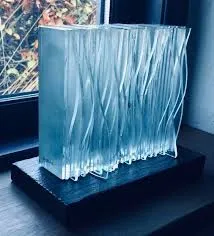The Manufacturing Process of Tempered Glass
Tempered glass, also known as toughened glass, is a type of safety glass that is manufactured through a process of extreme heating and rapid cooling. This innovative production method enhances the glass's strength, making it an ideal choice for a variety of applications, from windows and doors to shower enclosures and automotive components. Understanding the tempered glass manufacturing process is crucial for appreciating its unique properties and widespread use.
The Manufacturing Process of Tempered Glass
Once the glass has reached the desired viscosity, it is formed into sheets, which can be adjusted to specific thicknesses based on the application requirements. This is typically done using techniques such as floating, which allows the molten glass to flow onto a bed of molten tin, producing a smooth and even surface. After the glass sheets have cooled and solidified, they undergo cutting to the desired dimensions using automated machines. Precision is key at this stage to ensure that the final products meet industry standards.
tempered glass manufacture
The next crucial phase is the tempering process itself. The pre-cut glass sheets are placed into a tempering oven, where they are gradually heated to temperatures ranging from 1,150 to 1,300 degrees Fahrenheit (600 to 700 degrees Celsius). This heating phase is critical, as it prepares the glass for the rapid cooling that follows. Once the glass reaches the appropriate temperature, it undergoes a process called quenching, where it is exposed to high-velocity cold air. This sudden temperature drop causes the outer surface of the glass to cool and harden faster than the inner layers, creating a compressive stress on the surface, which significantly increases the overall strength of the glass.
The result of this sophisticated process is glass that is much stronger than ordinary glass—up to five times more resilient. Additionally, tempered glass is designed to shatter into small, blunt pieces rather than sharp shards, reducing the risk of injury in the event of breakage. These properties make tempered glass a popular choice in safety-critical applications.
After tempering, the glass sheets go through quality inspection to ensure they meet safety and manufacturing standards. Any defects such as bubbles, waves, or scratches are identified and addressed before the glass is prepared for delivery. Once passed, the tempered glass is packaged and shipped to various industries, including construction, automotive, and interior design.
In conclusion, the manufacture of tempered glass is a complex process that combines engineering precision with advanced technology. From the selection of quality raw materials to the intricate heating and cooling phases, each step plays a vital role in producing glass that not only meets but exceeds safety standards across various applications. As the demand for durable and safe glass products continues to rise, the tempered glass industry remains a critical player in modern manufacturing, contributing significantly to advancements in design, architecture, and safety innovations.
 Afrikaans
Afrikaans  Albanian
Albanian  Amharic
Amharic  Arabic
Arabic  Armenian
Armenian  Azerbaijani
Azerbaijani  Basque
Basque  Belarusian
Belarusian  Bengali
Bengali  Bosnian
Bosnian  Bulgarian
Bulgarian  Catalan
Catalan  Cebuano
Cebuano  Corsican
Corsican  Croatian
Croatian  Czech
Czech  Danish
Danish  Dutch
Dutch  English
English  Esperanto
Esperanto  Estonian
Estonian  Finnish
Finnish  French
French  Frisian
Frisian  Galician
Galician  Georgian
Georgian  German
German  Greek
Greek  Gujarati
Gujarati  Haitian Creole
Haitian Creole  hausa
hausa  hawaiian
hawaiian  Hebrew
Hebrew  Hindi
Hindi  Miao
Miao  Hungarian
Hungarian  Icelandic
Icelandic  igbo
igbo  Indonesian
Indonesian  irish
irish  Italian
Italian  Japanese
Japanese  Javanese
Javanese  Kannada
Kannada  kazakh
kazakh  Khmer
Khmer  Rwandese
Rwandese  Korean
Korean  Kurdish
Kurdish  Kyrgyz
Kyrgyz  Lao
Lao  Latin
Latin  Latvian
Latvian  Lithuanian
Lithuanian  Luxembourgish
Luxembourgish  Macedonian
Macedonian  Malgashi
Malgashi  Malay
Malay  Malayalam
Malayalam  Maltese
Maltese  Maori
Maori  Marathi
Marathi  Mongolian
Mongolian  Myanmar
Myanmar  Nepali
Nepali  Norwegian
Norwegian  Norwegian
Norwegian  Occitan
Occitan  Pashto
Pashto  Persian
Persian  Polish
Polish  Portuguese
Portuguese  Punjabi
Punjabi  Romanian
Romanian  Russian
Russian  Samoan
Samoan  Scottish Gaelic
Scottish Gaelic  Serbian
Serbian  Sesotho
Sesotho  Shona
Shona  Sindhi
Sindhi  Sinhala
Sinhala  Slovak
Slovak  Slovenian
Slovenian  Somali
Somali  Spanish
Spanish  Sundanese
Sundanese  Swahili
Swahili  Swedish
Swedish  Tagalog
Tagalog  Tajik
Tajik  Tamil
Tamil  Tatar
Tatar  Telugu
Telugu  Thai
Thai  Turkish
Turkish  Turkmen
Turkmen  Ukrainian
Ukrainian  Urdu
Urdu  Uighur
Uighur  Uzbek
Uzbek  Vietnamese
Vietnamese  Welsh
Welsh  Bantu
Bantu  Yiddish
Yiddish  Yoruba
Yoruba  Zulu
Zulu 

